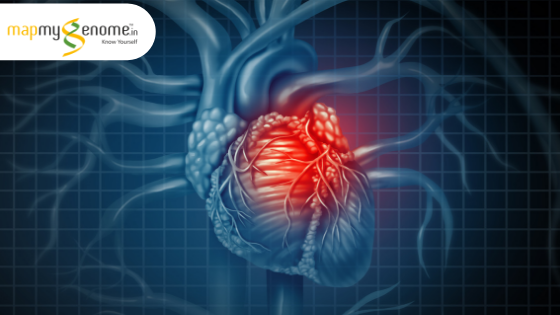
Inflammatory bowel disease (IBD) is a group of chronic conditions that affects the small intestine and large intestine. Ulcerative colitis (UC) and Crohn’s disease (CD) are the two major types of inflammatory bowel diseases. Ulcerative colitis causes long-standing ulcers in the rectum and the large intestine (colon). Crohn’s disease damages the large intestine, small intestine, and lining of the digestive tract. The proper cause for IBD is very little known but, factors like genetics, mucosal immune responses, weakened immune system and environmental interactions (smoking, NSAID use, and stress) usually lead to IBDs. Inflammatory bowel diseases can be diagnosed by a wide-range of modern-day techniques like colonoscopy (ulcerative colitis), endoscopy (Crohn’s disease), magnetic resonance imaging (MRI), and contract radiography and computed tomography (CT), etc.
One of the striking differences between UC and CD is, ulcerative colitis only affects the large intestine (colon) and causes superficial inflammation with the absence of granulomas. On the other hand, Crohn’s disease affects the gastrointestinal tract and causes transmural inflammation with the presence of granulomas. Both the disease states have a high risk of cancer. Ulcerative colitis is categorized on the location it affects.
- Ulcerative proctitis (area nearest to the rectum)
- Proctosigmoiditis (rectum and sigmoid colon)
- Left-sided colitis (sigmoid and descending colon)
- Pancolitis (entire colon)
- Acute severe ulcerative colitis (entire colon, very rare)
(Source: https://lasvegassun.com/native/sunrise/2015/nov/15/living-under-the-umbrella-of-inflammatory-bowel-di/)
How Common Is It?
In the year 2013, a total of 51,000 global deaths occurred due to IBDs. The number was 55,000 in the year 1990. In Asia and the Middle East, 6 in 100,000 people are diagnosed with IBDs, annually. The no’s are 24 and 19 in Europe and the USA respectively. The highest number of IBD cases was found in Norway with 505 per 100,000 suffering from IBDs. In the Indian population, UC was found to be more prevalent than CD. Of late, India has seen a huge rise in the number of IBD cases as the West, calling in place for better treatment procedures. Costly treatment procedures, limited acceptance of patients for surgery, absence of medical insurance coverage are few real-time challenges for treating the epidemic. Scientific research should target developing amiable low-cost treatment procedures that would be of help not only in India but also across the length and breadth of the continent.
Clinical Features:
- Ulcerative Colitis (UC): Continuous loss of stool, pain in the abdomen, cramps in the abdomen, decrease in appetite and weight, inflammation and swelling to eyes and joints and ulcers of mouth.
- Crohn’s Disease (CD): Decrease in appetite and weight, low-grade fever, continuous diarrhea, pain in the abdomen, delayed sexual growth in children, inflammation and swelling to eye and joints and ulcers of mouth.
Problem of Inflammatory Bowel Diseases in India:
The sub-continental burden of IBD is estimated to be the highest over the globe in spite of its little prevalence when compared to the West. Even though there are many differences at a genetic level between the Indian and western population, Indian immigrants living in the high prevalence areas are more among the most vulnerable to the disease than ever. Factors like higher education, profession, heavy income, are considered to have a limited impact on the incidence of the disease. Food and diet are one of the important factors of gut microbiome. Many epidemiological studies have reported that foods containing good amounts of soluble fiber, vitamin D, potassium and zinc have a positive effect on CD, and a vegetarian diet has a positive effect on UC. As per the concept of Omran, there are three frames of the epidemiological transition model; the “age of pestilence and famine”, the “age of receding pandemics”, and the “age of degenerative and man-made diseases”. According to him, IBD is now entering the “The Third Epidemiological Transition” (Omran AR, 1998). Going forward, research scientific research should focus on developing new biomarkers and diagnostic techniques in areas like genetics, molecular pathology and gastrointestinal endoscopy etc.
Inflammatory Bowel Disease (IBD) – Risk Factors and Complications:
- Age
- Ethnicity
- Family history
- Cigarette smoking
- Non-steroidal anti-inflammatory medications
Ulcerative colitis and Crohn’s Disease have few complications in common and a countable few that are particular to each condition. The complications that are found in both the disease states are,
- Colon cancer
- Blood clots
- Inflammation to skin, eye and joints
- Risk of osteoporosis and high blood pressure due to medication
- Primary sclerosing cholangitis
Crohn’s Disease:
- Bowel obstruction
- Malnutrition
- Ulcers
- Fistulas
- Anal fissure
Ulcerative Colitis:
- Heavy bleeding
- Heavy dehydration
- Osteoporosis
- Toxic megacolon
- Hole in the colon
- High risk of blood clots in veins and arteries
Do Genes have anything to do with it?
Crohn’s Disease:
Genetic variation in many regions can increase the risk of Crohn’s disease. Such variants have been identified in the ATG16L1 gene (regulates autophagy), NKX2-3 (gut physiology, B- and T-cell lymphocyte function in the lymphoid organs), IL23R (pro-inflammatory cytokine which participates in the interleukin pathways, which perform immune regulation and T-cell activation, intestinal inflammation), NOD2 gene (immune response of the gastrointestinal system and inflammatory response), PTPN22 gene (modulator of T-cell signaling and helps regulate apoptosis of autoreactive T cells), MSP gene (growth factor, expressed in the liver for the negative regulation of inflammatory response, and near PTGER4, in the 5p13 locus (immune response regulator).
Ulcerative Colitis:
Many studies have shown the association of chromosome 1p36 and 12q15 with ulcerative colitis. Some of the markers that increase risk for UC are in the JAK2 gene, NKX2-3 gene (regulates gut physiology, B- and T-cell lymphocyte function in the lymphoid organs), IL23R gene (proinflammatory cytokine which participates in the interleukin pathways, which perform immune regulation and T-cell activation, intestinal inflammation), 2p16 region (near the PUS10 gene), 12q14 and 12q15 region (near the IFNG, IL22 and IL26 genes which participate in immune response and cytokine regulation), CDH1 gene (involved in epithelial barrier function), FCG2RA gene (antibody binding and autoimmune response), 6p21 region (Major Histocompatibility Complex or MHC region – near HLA genes which regulate autoimmune and inflammatory response), near the IL10 gene (regulates cytokine production), 1p36 region (near RNF186 gene, which maintains protein homeostasis and regulates intestinal inflammation), in the CARD9 gene (fights infections), in the 22q13 region (IL17REL gene), in the 20q13 region (distal to 3’ UTR of HNF4A gene, involved in epithelial barrier function), and in the 7q31 region (LAMB1 gene).
Managing Inflammatory Bowel Diseases: Risk -Diet and Lifestyle:
Both CD and UC have a similar life expectancy, but are expected to lead to a disease state. Nearly 80% of patients with CD and 25% will be requiring surgical assistance. Treatment options are limited to UC, but expanding for CD. Diagnosing inflammatory bowel disease can be done by endoscopic procedures (colonoscopy, flexible sigmoidoscopy, balloon-assisted enteroscopy) and imaging procedures (x-ray, computerized tomography (CT) scan, magnetic resonance imaging (MRI)). UC is usually treated by corticosteroids and mesalazine, but CD can be treated by a wide-range of alternative therapies like enteral nutrition, probiotics and prebiotics, acupuncture, anti-TNF antibodies etc.
(Source: https://realfoodfans.wordpress.com/2015/07/14/food-and-my-health-ibd/)
How Can Mapmygenome Help you:
At Mapmygenome, our focus is mainly on predictive risk assessment, maintaining a proper diet, adapting to a healthier lifestyle. A comprehensive wellness assessment like Genomepatri will give an insight into the weaknesses of your immunity, genetic predisposition to specific health conditions, drug efficiency and helps in pre-empting most of these risks. Genetic counseling is therefore recommended to obtain authenticated reviewing and recommending testing/screening options, diet/lifestyle interventions and educational and emotional support.
Tapping into your genes will assist you to know the real ‘YOU’. Genomepatri helps you find the best-suited route for yourself, and reiterates the importance of not following the crowd but forging a unique way of leading quality life. It is personalized, predictive, participatory, preventive, and POWERFUL!!!
References:
- Kedia, Saurabh, and Vineet Ahuja. “Epidemiology of inflammatory bowel disease in India: the great shift east.”Inflammatory intestinal diseases 2.2 (2017): 102-115.
- Nayar, M., and J. M. Rhodes. “Management of inflammatory bowel disease.” Postgraduate medical journal 80.942 (2004): 206-213.
- Omran, Abdel R. “The epidemiologic transition theory revisited thirty years later.” World health statistics quarterly 51.2-4 (1998): 99-119.
- Ray, Gautam. “Inflammatory bowel disease in India – Past, present and future.” World journal of gastroenterology vol. 22,36 (2016): 8123-36. doi:10.3748/wjg.v22.i36.8123
- The Facts About Inflammatory Bowel Diseases. New York, NY: Crohn’s and Colitis Foundation of America; 2014.










